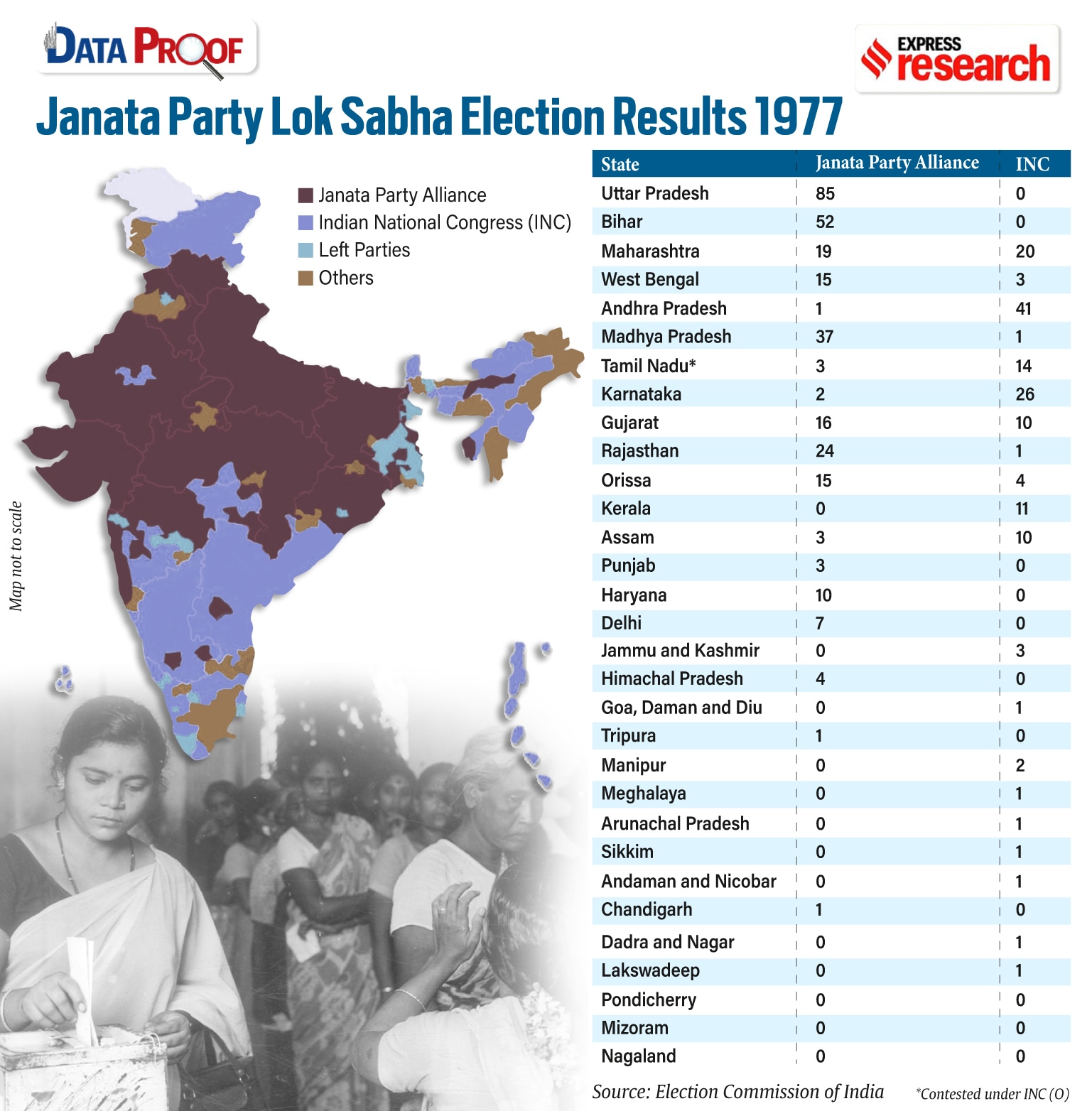1977 general election: When the Janata govt came to power
In 1977, reverberating from the animosity of Emergency, The Indian National Congress was voted out of power for the first time in its history in favour of the newly emerged Janata Party.
 Moraji Desai was voted in as India's first non-Congress Prime Minister in 1977
Moraji Desai was voted in as India's first non-Congress Prime Minister in 1977There is a powerful role that numbers can play in narrating the life of a democracy. As India votes in the 18th Lok Sabha elections, we dig out some key numbers that have shaped the country’s electoral politics over the decades. Data Proof, a seven-part series, will tell the story of elections in India through numbers.
The 1977 Lok Sabha election brought the country’s first non-Congress government to power — the Janata Party alliance.
The election occurred during a politically turbulent period for the Congress and its stalwart Indira Gandhi. In 1975, the Allahabad High Court set aside Indira Gandhi’s 1971 election on grounds of electoral malpractice. Her government responded by declaring Emergency. During the 21-month period of Emergency, the Indian press was severely restricted and protesters and Opposition members alike were arrested.
 Performance of the Janata Party alliance in the 1977 elections. (Edited by Abhishek Mitra)
Performance of the Janata Party alliance in the 1977 elections. (Edited by Abhishek Mitra)
The scheduled Lok Sabha election of 1976 was delayed and a new election was announced in March of the following year. Soon after, four out of the seven national parties — Charan Singh’s Bharatiya Lok Dal (BLD), the Bharatiya Jana Sangh (which would lay the roots for the BJP), the Congress (O), and the Socialist Party — merged to form a new party called the Janata Party, which was opposed to Emergency and the Congress.
As the Election Commission of India (ECI) did not recognise the Janata Alliance, the parties competed under the banner of the BLD in most states, and under the Congress (O) in Tamil Nadu and Pondicherry.
The Janata Party campaigned under the slogan of democracy versus dictatorship, building upon the country’s growing dissatisfaction with Indira Gandhi and Emergency. The Janata Party won 298 out of 542 seats in the Lok Sabha, 73 per cent of the seats it competed for. Moraji Desai, then 81-year-old, was sworn in as the Prime Minister, with Congress’ defeat compounded by the fact that both Indira and her son Sanjay lost their respective elections.
On May 11, 1977, the ECI recognised Janata as a national party, and the BLD symbol became the Janata Party’s symbol. It formed the government with its allies. The Congress won only 154 seats, its lowest tally until 2014 when it won a paltry 44 seats in total.
The Janata alliance was particularly successful in the North, winning all 85 seats in Uttar Pradesh, 52 out of 54 in Bihar, and 37 out of 40 in Madhya Pradesh. It won 24 seats in Rajasthan and 19 in Maharashtra, including all seats from Bombay. Although smaller in terms of numbers of MPs sent to New Delhi, the Janata Party also won all seats in Haryana, Delhi, Himachal Pradesh and Chandigarh.
Congress retained power somewhat in the south, winning 92 out of the 154 seats in Andhra Pradesh, Karnataka, Tamil Nadu and Kerala. The Janata Party won no seats in Kerala, two in Karnataka, and three in Tamil Nadu under the banner of Congress (O).
The Janata Party rode the anti-Congress sentiment to the highest echelons of power, but its time at the top would not last long. A little longer than a year after Morarji Desai assumed office, his home minister Charan Singh would resign. Singh returned as Finance Minister and Deputy Prime Minister in 1979 but resigned for the second time, going on to form the Janata Party (Secular).
Between 1977 and 1979, 76 parliamentarians defected from the Janata alliance. When the 1980 Lok Sabha elections were called, the Congress resumed its grip on power. The Janata Party won just 31 seats and the Janata Party (Secular) won 41. The Janata alliance would continue to fracture over subsequent years.
- 01
- 02
- 03
- 04
- 05































